Don't wanna be here? Send us removal request.
Text
The search for Planet 9
The Case Strengthens For "Planet 9"
0 notes
Text
CITIZEN SCIENCE
Zooniverse Receives NEH Grant to Evaluate Transcription Tools
View On WordPress
0 notes
Text
Top 10 Things to Know for the Return of our Launch America Mission With SpaceX

History was made May 30 when NASA astronauts Robert Behnken and Douglas Hurley launched from American soil in a commercially built and operated American crew spacecraft on its way to the International Space Station.
Pictured above is the SpaceX Dragon Endeavour spacecraft that lifted off on the company’s Falcon 9 rocket from Launch Complex 39A at Kennedy Space Center in Florida and docked with the space station on May 31. Now, Behnken and Hurley are ready to return home in Endeavour for a splashdown off the coast of Florida, closing out a mission designed to test SpaceX’s human spaceflight system, including launch, docking, splashdown, and recovery operations. Undocking is targeted for 7:34 p.m. ET on August 1, with splashdown back to Earth slated for 2:42 p.m. on August 2. Watch our continuous live coverage HERE.
1. Where will Behnken and Hurley splash down?
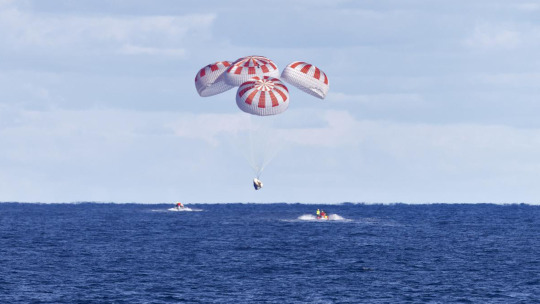
Image: SpaceX’s Crew Dragon is guided by four parachutes as it splashes down in the Atlantic on March 8, 2019, after the uncrewed spacecraft’s return from the International Space Station on the Demo-1 mission.
Together with SpaceX, we are capable of supporting seven splashdown sites off the coast of Florida. The seven potential splashdown sites for the Dragon Endeavor are off the coasts of Pensacola, Tampa, Tallahassee, Panama City, Cape Canaveral, Daytona, and Jacksonville.
2. How will a splashdown location be chosen?
Splashdown locations are selected using defined priorities, starting with selecting a station departure date and time with the maximum number of return opportunities in geographically diverse locations to protect for weather changes. Teams also prioritize locations which require the shortest amount of time between undocking and splashdown based on orbital mechanics, and splashdown opportunities that occur in daylight hours.
Check out the Departure and Splashdown Criteria Fact Sheet for an in-depth look at selecting return locations, decision points during return, and detailed weather criteria.
3. How long will it take for Behnken and Hurley to return to Earth?

Return time for Behnken and Hurley will vary depending on the undock and splashdown opportunities chosen, with the primary opportunity taking between six and 30 hours.
4. What does the return look like? What are the major milestones?
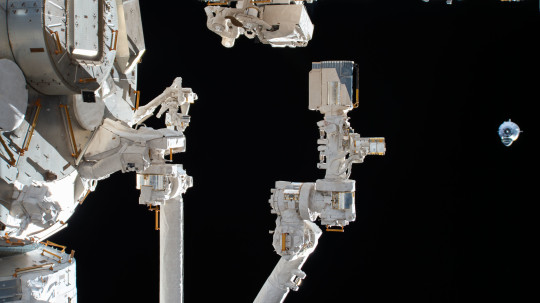
Crew Dragon’s return home will start with undocking from the International Space Station. At the time of undock, Dragon Endeavour and its trunk weigh approximately 27,600 pounds. We will provide live coverage of the return from undocking all the way through splashdown.
There will be two very small engine burns immediately after hooks holding Crew Dragon in place retract to actually separate the spacecraft from the station. Once flying free, Dragon Endeavour will autonomously execute four departure burns to move the spaceship away from the space station and begin the flight home. Several hours later, one departure phasing burn, lasting about six minutes, puts Crew Dragon on the proper orbital path to line it up with the splashdown zone.
Shortly before the final deorbit burn, Crew Dragon will separate from its trunk, which will burn up in Earth’s atmosphere. The spacecraft then executes the deorbit burn, which commits Crew Dragon to return and places it on an orbit with the proper trajectory for splashdown. After trunk separation and the deorbit burn are complete, the Crew Dragon capsule weighs approximately 21,200 pounds.
5. How fast will Dragon Endeavour be going when it re-enters the Earth’s atmosphere? How hot will it get?
Crew Dragon will be traveling at orbital velocity prior to re-entry, moving at approximately 17,500 miles per hour. The maximum temperature it will experience on re-entry is approximately 3,500 degrees Fahrenheit. The re-entry creates a communications blackout between the spacecraft and Earth that is expected to last approximately six minutes.
6. When do the parachutes deploy?

Image: SpaceX’s final test of Crew Dragon’s Mark 3 parachute system on Friday, May 1, 2020, that will be used during the Demo-2 splashdwon mission.
Dragon Endeavour has two sets of parachutes will that deploy once back inside Earth’s atmosphere to slow down prior to splashdown. Two drogue parachutes will deploy at about 18,000 feet in altitude while Crew Dragon is moving approximately 350 miles per hour. Four main parachutes will deploy at about 6,000 feet in altitude while Crew Dragon is moving approximately 119 miles per hour.
7. Who recovers the crew and the Dragon Endeavour capsule from the water? What vehicles and personnel are involved?

Image: SpaceX’s Crew Dragon is loaded onto the company’s recovery ship, Go Searcher, in the Atlantic Ocean, about 200 miles off Florida’s east coast, on March 8, after returning from the International Space Station on the Demo-1 mission.Credits: SpaceX
For splashdown at any of the seven potential sites, SpaceX personnel will be on location to recover the capsule from the water. Two recovery ships, the Go Searcher and the Go Navigator, split locations between the Gulf of Mexico and the Atlantic Ocean off the coast of Florida. On either ship will be more than 40 personnel from SpaceX and NASA, made up of spacecraft engineers, trained water recovery experts, medical professionals, the ship’s crew, NASA cargo experts, and others to assist in the recovery.
8. How long after splashdown until Behnken and Hurley are out of the capsule?

Image: NASA astronaut Doug Hurley, along with teams from NASA and SpaceX, rehearse crew extraction from SpaceX’s Crew Dragon, on August 13, 2019. Credits: NASA/Bill Ingalls
Immediately after splashdown has occurred, two fast boats with SpaceX personnel deploy from the main recovery ship. The first boat checks capsule integrity and tests the area around the Crew Dragon for the presence of any hypergolic propellant vapors. Once cleared, the personnel on the boats begin preparing the spaceship for recovery by the ship. The second fast boat is responsible for safing and recovering Crew Dragon’s parachutes, which have at this point detached from the capsule and are in the water.
At this point the main recovery vessel can move in and begin to hoist the Crew Dragon capsule onto the main deck. Once the capsule is on the recovery vessel, it is moved to a stable location for the hatch to be opened for waiting medical professionals to conduct initial checks and assist Behnken and Hurley out of Dragon Endeavour.
This entire process is expected to take approximately 45 to 60 minutes, depending on spacecraft and sea state conditions.
9. Where do Behnken and Hurley go after they are out of the capsule?
Immediately after exiting the Crew Dragon capsule, Behnken and Hurley will be assisted into a medical area on the recovery ship for initial assessment. This is similar to procedures when welcoming long-duration crew members returning home on Soyuz in Kazakhstan.
After initial medical checks, Behnken and Hurley will be returned to shore either by traveling on the primary recovery ship or by helicopter. Helicopter returns from the recovery ship are the baseline for all splashdown zones except for the Cape Canaveral splashdown site, with travel times ranging from approximately 10 minutes to 80 minutes. The distance from shore will be variable depending on the splashdown location, ranging from approximately 22 nautical miles to 175 nautical miles.
Once returned to shore, both crew members will immediately board a waiting NASA plane to fly back to Ellington field in Houston.
10. What happens next?

Image: NASA astronauts Shannon Walker, Victor Glover Jr. and Mike Hopkins and Japan’s Soichi Noguchi train in a SpaceX Crew Dragon capsule. Credit: SpaceX
Meanwhile, Dragon Endeavour will be returned back to the SpaceX Dragon Lair in Florida for inspection and processing. Teams will examine the data and performance of the spacecraft throughout the test flight to complete the certification of the system to fly operational missions for our Commercial Crew and International Space Station Programs. The certification process is expected to take about six weeks. Following successful certification, the first operational mission will launch with Crew Dragon commander Michael Hopkins, pilot Victor Glover, and mission specialist Shannon Walker – all of NASA – along with Japan Aerospace Exploration Agency (JAXA) mission specialist Soichi Noguchi will launch on the Crew-1 mission from Launch Complex 39A at NASA’s Kennedy Space Center in Florida. The four crew members will spend six months on the space station.
The launch is targeted for no earlier than late-September.
Make sure to follow us on Tumblr for your regular dose of space: http://nasa.tumblr.com
1K notes
·
View notes
Text
Was There Once Life On Mars? Our Perseverance Rover Aims to Find Out
Our Perseverance mission is set to launch on Thursday, July 30 and could help answer many longstanding astrobiology questions about Mars. The mission will deliver our Perseverance rover to the Martian surface, and this powerful rover is equipped with a multitude of tools to study the planet’s environment and to answer questions about whether or not the Red Planet could have had life in the past.

In preparation for launch, our Astrobiology Program is releasing a new update to Issue #2 of the graphic history series, Astrobiology: The Story of our Search for Life in the Universe. This new, fourth edition tells the tale of our exploration of Mars in relation to astrobiology.

The history of our exploration of Mars is full of struggle and triumph. Mars is a dangerous and difficult planet to visit, with frigid temperatures, damaging dust storms, low gravity, and a thin atmosphere. Despite the challenges, NASA missions have opened our eyes to a world that was much more Earth-like in its past, with environments that contained all the necessary conditions for life as we know it.

Issue #2 tells the complete history of our endeavours on Mars, from the Mariner missions to Viking and Pathfinder to Curiosity. In this fourth edition, you’ll find details on the Perseverance rover and its journey to search for ancient signs and signatures of life that could once and for all tell us whether or not life gained a foothold on the ancient Red Planet.

Perseverance will also drill into Martian rocks and collect samples that will one day be returned to Earth by a future Mars Sample Return mission. The samples will be stored in special containers and carefully ‘cached’ in a location on Mars where they will be easily accessible for retrieval. These samples will allow astrobiologists to perform detailed experiments that robots are not yet able to undertake remotely.

Visit astrobiology.nasa.gov/graphic-histories/ to download the new edition of Astrobiology: The Story of our Search for Life in the Universe, and read the entire series to explore NASA’s astrobiology journey to understand the origin and evolution of life on Earth, and the potential for life elsewhere in the Universe!
Make sure to follow us on Tumblr for your regular dose of space: http://nasa.tumblr.com
2K notes
·
View notes
Text
7 Things to Know about the Perseverance Mars Rover
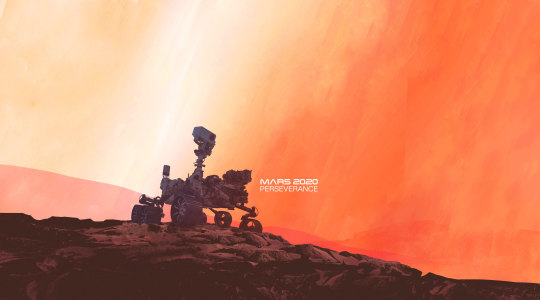
We’re set to launch the Mars 2020 Perseverance rover mission from Cape Canaveral, Florida, on July 30. The rover is loaded with scientific instruments and advanced technology, making it the largest, heaviest and most sophisticated vehicle ever sent to the Red Planet.
What is Perseverance’s mission and what will it do on Mars? Here are seven things to know:
1. Perseverance draws on the NASA – and scientific – spirit of overcoming challenges
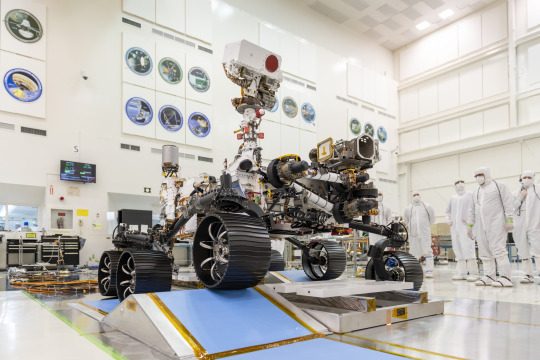
Not only does it have to launch during a pandemic and land on a treacherous planet, it has to carry out its science goals:
Searching for signs of past microbial life
Mapping out the planet’s geology and climate
Collecting rock and other samples for future return to Earth
Paving the way for human exploration
We chose the name Perseverance from among the 28,000 essays submitted during the “Name the Rover” contest. Because of the coronavirus pandemic, the months leading up to the launch in particular have required creative problem solving, teamwork and determination.
2. Perseverance builds on the lessons from other Mars rovers

In 1997, our first Mars rover – Sojourner – showed that a robot could rove on the Red Planet. Spirit and Opportunity, which both landed in 2004, found evidence that Mars once had water before becoming a frozen desert.
Curiosity found evidence that Mars’ Gale Crater was home to a lake billions of years ago and that there was an environment that may have sustained microbial life. Perseverance aims to answer the age-old question – are there any signs that life once existed on Mars?
3. Perseverance will land in a place with high potential to find signs of ancient life
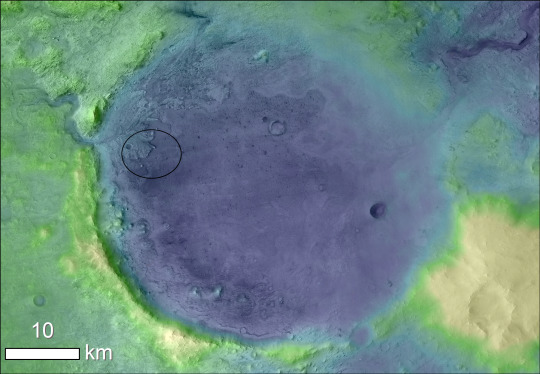
The rover will land in Jezero Crater, a 28-mile wide basin north of the Martian equator. A space rock hit the surface long ago, creating the large hole. Between 3 and 4 billion years ago, a river flowed into a body of water in Jezero the size of Lake Tahoe.
4. Perseverance will also collect important data about Mars’ geology and climate
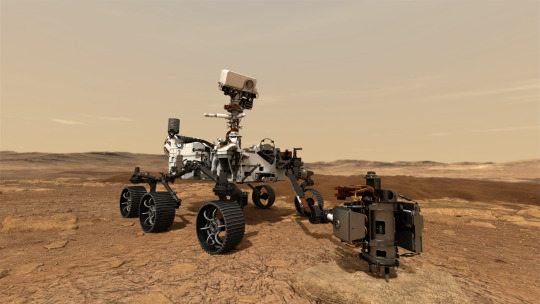
Mars orbiters have collected images and other data about Jezero Crater from about 200 miles above, but finding signs of past life will need much closer inspection. A rover like Perseverance can look for those signs that may be related to ancient life and analyze the context in which they were found to see if the origins were biological.
5. Perseverance is the first leg of a round trip to Mars

This is the first rover to bring a sample-gathering system to Mars that will package promising samples of rocks and other materials for future return to Earth. NASA and ESA are working on the Mars Sample Return campaign, so we can analyze the rocks and sediment with tools too large and complex to send to space.
6. Perseverance will pave the way for human exploration of the Red Planet
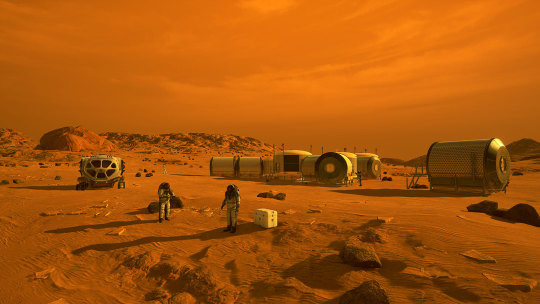
Two packages – one that helps the rover autonomously avoid hazards during landing (TRN) and another that gathers crucial data during the trip through Mars’ atmosphere (MEDLI2) – will help future human missions land safely and with larger payloads on other worlds.
There are two instruments that will specifically help astronauts on the Red Planet. One (MEDA) will provide key information about the planet’s weather, climate and dust activity, while a technology demonstration (MOXIE) aims to extract oxygen from Mars’ mostly carbon-dioxide atmosphere.
7. You get to ride along
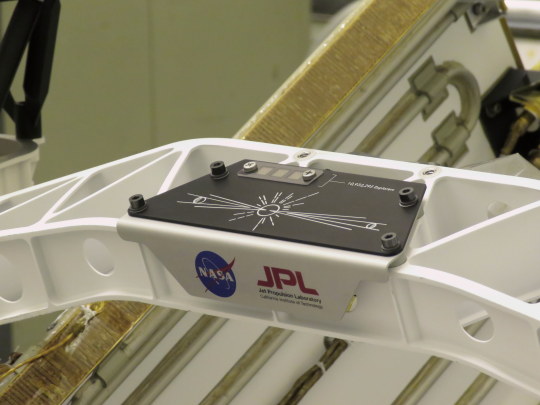
Perseverance and other parts of the Mars 2020 spacecraft feature 23 cameras, which is more than any other interplanetary mission in history. Raw images from the camera are set to be released on the mission website.
There are also three silicon chips with the names of nearly 11 million people who signed up to send their names to Mars.
And you can continue to follow the mission on Twitter and Facebook.
Make sure to follow us on Tumblr for your regular dose of space: http://nasa.tumblr.com
4K notes
·
View notes
Text
Three NASA Telescopes Look at an Angry Young Star Together
Science is a shared endeavor. We learn more when we work together. Today, July 18, we’re using three different space telescopes to observe the same star/planet system!
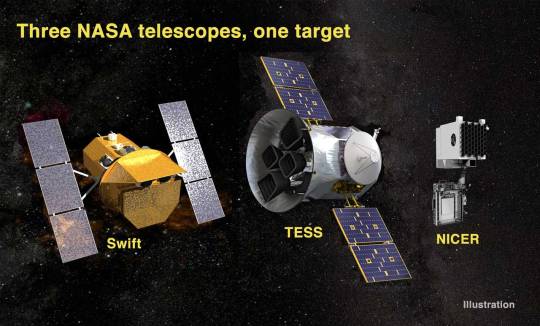
As our Transiting Exoplanet Survey Satellite (TESS) enters its third year of observations, it’s taking a new look at a familiar system this month. And today it won’t be alone. Astronomers are looking at AU Microscopii, a young fiery nearby star – about 22 million years old – with the TESS, NICER and Swift observatories.
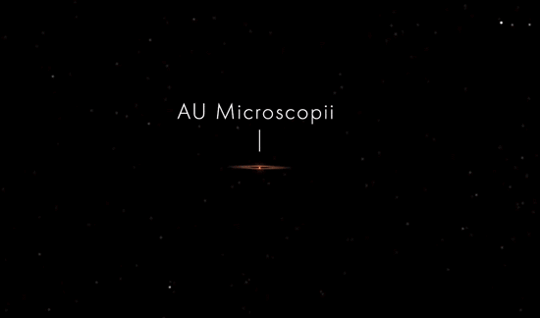
TESS will be looking for more transits – the passage of a planet across a star – of a recently-discovered exoplanet lurking in the dust of AU Microscopii (called AU Mic for short). Astronomers think there may be other worlds in this active system, as well!
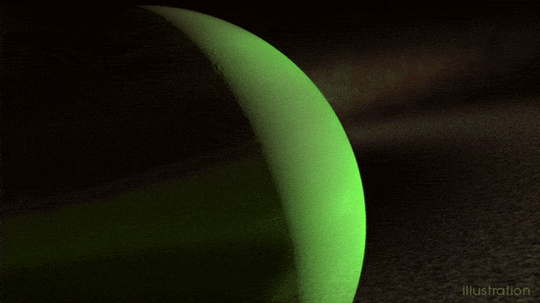
Our Neutron star Interior Composition Explorer (NICER) telescope on the International Space Station will also focus on AU Mic today. While NICER is designed to study neutron stars, the collapsed remains of massive stars that exploded as supernovae, it can study other X-ray sources, too. Scientists hope to observe stellar flares by looking at the star with its high-precision X-ray instrument.
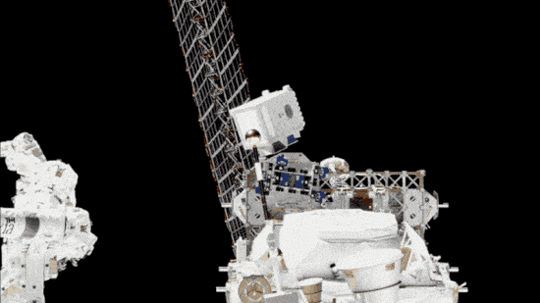
Scientists aren’t sure where the X-rays are coming from on AU Mic — it could be from a stellar corona or magnetic hot spots. If it’s from hot spots, NICER might not see the planet transit, unless it happens to pass over one of those spots, then it could see a big dip!

A different team of astronomers will use our Neil Gehrels Swift Observatory to peer at AU Mic in X-ray and UV to monitor for high-energy flares while TESS simultaneously observes the transiting planet in the visible spectrum. Stellar flares like those of AU Mic can bathe planets in radiation.
Studying high-energy flares from AU Mic with Swift will help us understand the flare-rate over time, which will help with models of the planet’s atmosphere and the system’s space weather. There’s even a (very) small chance for Swift to see a hint of the planet’s transit!

The flares that a star produces can have a direct impact on orbiting planets’ atmospheres. The high-energy photons and particles associated with flares can alter the chemical makeup of a planet’s atmosphere and erode it away over time.
Another time TESS teamed up with a different spacecraft, it discovered a hidden exoplanet, a planet beyond our solar system called AU Mic b, with the now-retired Spitzer Space Telescope. That notable discovery inspired our latest poster! It’s free to download in English and Spanish.

Spitzer’s infrared instrument was ideal for peering at dusty systems! Astronomers are still using data from Spitzer to make discoveries. In fact, the James Webb Space Telescope will carry on similar study and observe AU Mic after it launches next year.
Make sure to follow us on Tumblr for your regular dose of space: http://nasa.tumblr.com
1K notes
·
View notes
Photo

That’s a wrap! Thank you all very much for the wonderful questions.
We’re so excited to send Perseverance off on her journey to Mars, and we will be launching on July 30 at 7:50 a.m. EDT from Kennedy Space Center in Florida.
If today’s Answer Time got you excited, team up with us to #CoutdownToMars! We created a virtual Mars photo booth, 3D rover experience and more for you to put your own creative touch on sending Perseverance well wishes for her launch to the Red Planet! View them all, HERE.
Make sure to follow us on Tumblr for your regular dose of space: http://nasa.tumblr.com
959 notes
·
View notes
Note
As an engineering undergrad how can I contribute to the space exploration program?
518 notes
·
View notes
Note
What range/area will Perseverance be able to cover on the Martian surface? I'm assuming it's greater than the other rovers but by how much?
384 notes
·
View notes
Note
Do you have any messages or tips for other girls who want to study and work in STEM fields?
2K notes
·
View notes
Note
Why do scientists think there could have been life on Mars?
12K notes
·
View notes
Note
What did you major in? What was your college experience?
348 notes
·
View notes



